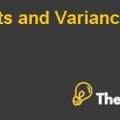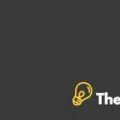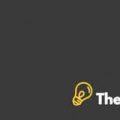Noble Group Case Study Solution
The Noble Company is efficiently utilizing its assets in order to generate greater sales despite of having a low profit margin. The noble company is not focusing on its cost structure that’s why they have low profit margin. In order to increase the profit margin the Noble Company has to work on its cost leadership structure. The Noble Company implies a business strategy in which it focuses on the sales growth by efficiently using its assets but as its sales are increasing its cost incurrence also increasing, due to which profit margin of the company is decreasing. The Noble Company has to work on its cost structure.
What fraction of Noble’s assets is financed by equity? What does this imply about the need for risk management? In which way do Noble’s purchasing policies affect the need for risk management?
Equity Financing:
The equity ratios shows that how much of the company’s assets is financed by the share equity. Lower equity ratio shows that most of the company’s assets is financed by the debt which is one of the negative sign.The equity ratio of the Noble Company is currently stood at 20%. However, the equity ratio of the company is continuously decreasing which is one of the negative sign for the company. The portion of assets which is financed by the equity is only 20% which indicate that the 80% of the company’s’ assets is financed by the debts. The lower equity ratio is unfavorable to the company and considered to be more risky. The lower equity ratios shows that the company has higher reliance on the debt. Higher reliance on the debt increase the fixed burden of the interest. However, the equity financing is considered to be cheaper than the debt financing.
Imply For Need For Risk Management:
In order to manage risk related to the commodities, the company involve in future rate agreement (FRA). In the future agreement, the buyer and the seller set the terms of purchasing prices in advance which resulting in little impact of rising and falling of commodity prices on profit margins.As the company is highly dependent on debt, the company may face some issues in future. The fluctuation of the interest risk would also impact on the company. Lower equity ratio spoils the company’s future opportunity to facilitate its transaction with debt. When the company purchases the different commodities with the debt, the bank charges a higher collateral. Additionally, if the company may bear a loss the company have to pay fix cost of interest. In comparison, if the company use equity for financing, in case of loss, the company wouldn’t pay dividend to its shareholders. In case of loss the company would be obliged to pay fixed amount of interest which is considered to be a risk. In order to manage the risk, the company would increase its equity financing which is considered to be cheaper than the debt financing. By equity financing the company may improves its capital structure. The company is also considered to be highly Leverage Company so in future the customers could resists to engage in transactions.
Effects On Policies:
The purchasing policies of the company is to buy at lower prices and then sold it at minimum market prices with the aim to increase its consumer base and earn better margins. The company engage in FRA contracts in order to mitigate the risk related to different commodities.The company purchasing policies increases the debt level and the company manage its future risk by the equity financing. This would create a clash between the purchasing policies and the risk management.
How does Noble manage commodities price risk? Which new risk does the shedding of price risk on an exchange give rise to? Which alternative to an exchange is available to Noble? Which new risk does that alternative in turn give rise to?
Manage Commodities Price Risk:
The Noble Company has a price or market price risk as prices are characteristically volatile. It can be change at any time. The noble company wants to manage the risk by hedging and entering into futures contract (FRA) with suppliers, which help Nobel company to mitigate its commodity price risk to some extent. The future contract is basically the legal agreement between the buyer and seller of goods, in which both the parties buy or sell goods at a predetermined future price and at a specified time period in the future. In future contract both the seller and buyer has the obligation to complete the contract. The buyer has the obligation to buy the underlying asset when the future contract expires and the seller has the obligation to sell that underlying assets at the future contract expiration date. Due to future contract, the Noble Company has no or very little impact on the profitability of the company, as the losses in the physical market due to increase or decrease of commodity prices will be offset in the future exchange.
The new risk due to shedding of prices in future may rise to give foreign currency risk to the Nobel Company, if there is any future contract with foreign party. Change in the currency value may implied a change in the predominated value of that currency. It also implies the risk of liquidity, interest rate risk, settlement and delivery risk, leverage and operational risk as well. It gives to counter party risk as well.
Counter party risk is defined as the risk, chances or probability of default in transaction by either one of the party who are legally in a contract, may default on its contractual obligations. The counter party risk is mostly appear in credit transactions, credit and investments. The alternative to the exchange are swaps, options etc. swap is defined as the derivative contract in which two parties exchange the cash flows and liabilities of two different financials. Each cash flow in the swap consists of one leg. It consist of two cash flows. One cash flow is fixed while the other cash flow is variable with the based on the benchmark interest rate. Swaps are over the counter contracts, they do not run or trade on exchange. The commodity swaps involves the fluctuation of prices in the commodity market. In swap, one party is exchanging cash flow or value of asset with one another. It is an alternative for the Noble Company to use the Commodity swap.
Another alternative for the Noble Company is to enter into options contract. Options contract is defined as the agreement between the buyer and seller, in which the buyer of option contract has a right to buy or sell a particular asset at a later date as decided in the contract and at a predetermined price. Through options contract, the traders get an opportunity to hedge their stock position as well. If Noble Company opt options contract it also protect against portfolio losses. Options are of two types call and buy options. Noble company can use both the options in trading commodity business. From both the contracts, one is at the short position (sell) the contract and the other party is at long position (buy) the contract……………
This is just a sample partical work. Please place the order on the website to get your own originally done case solution.
How We Work?
Just email us your case materials and instructions to order@thecasesolutions.com and confirm your order by making the payment here










